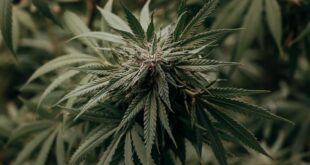
With the new marijuana legalization law, Canada aims for the growth of a new market that has been asleep for a while. This new law is turning out better than in the nine states of the United States where the use of cannabis is already legal. However, there are still some discrepancies regarding the role of government, age limit, maximum consumption, forms and points of sale, and prices and taxes.
After the announcement of the Canadian Prime Minister, Justin Trudeau, the government has been in charge of analyzing the distribution of the product, taxes and prices in these authorized stores.
In the case of Ontario, it plans to open around 150 stores, which would be managed by Liquor Control Board, as there is currently no authorized distributor of pot. British Columbia is planning to mix both private and government distributors and look for a balance in prices, while Newfoundland plans to have only private stores for the distribution of legal pot.
As in the United States, the provinces differ in the cultivation of cannabis, but the limit is expected to be four plants per house.
Unlike the United States, in Canada the consumption of pot will be allowed with the minimum age of 18 years. However, it is in the freedom of the provinces to decide the minimum age, many choose 19 years.
Pricing and Taxes
Now in terms of pricing, the stores, whether private or public, will receive marijuana through producers with a federal license. In the same way, the government will give stores the minimum price for the sale of legal pot. With this, it seeks to regulate purchases and for this new market to become an opportunity to companies and investors to invest in it.
The finance ministers of Canada have stipulated the legal pot price at $10 per gram. However, the minister of Yukón, in charge of marijuana, says that the price is very high compared to the sale in illegal stores, whose price ranges between $7 and $8 per gram.
The federal government wants to provide legal marijuana with a tax of $1 per gram, or one tenth of the price per gram, in addition to local and federal tax. Even so, it is very likely that the taxes on this legal pot will be lower than taxes in the United States, where the tax rate is 37 percent plus local and state taxes.
Obviously, the law legalizing marijuana for recreational purposes in Canada seeks to reduce the illegal market and seeks to regulate consumption, as well as opening a new market which has potential for exploitation.
The new laws are limited to regulating the distribution of the dry plant, seeds and oils, but not the edible ones. This has opened a discrepancy among consumers because many of them want to consume pot through food and not directly. However, the government has said that to regulate edibles it would take about a year, because it is a totally different business.
However, this has not stopped companies producing cannabis products and edibles. On the contrary, the market promises to be favorable to them, so that companies such as FSD Pharma, (OTCPK: FSDDF) (C.HUGE) are working on their means of production, growing establishments and improving their technology.
 Investment value finders Investment value finders
Investment value finders Investment value finders



